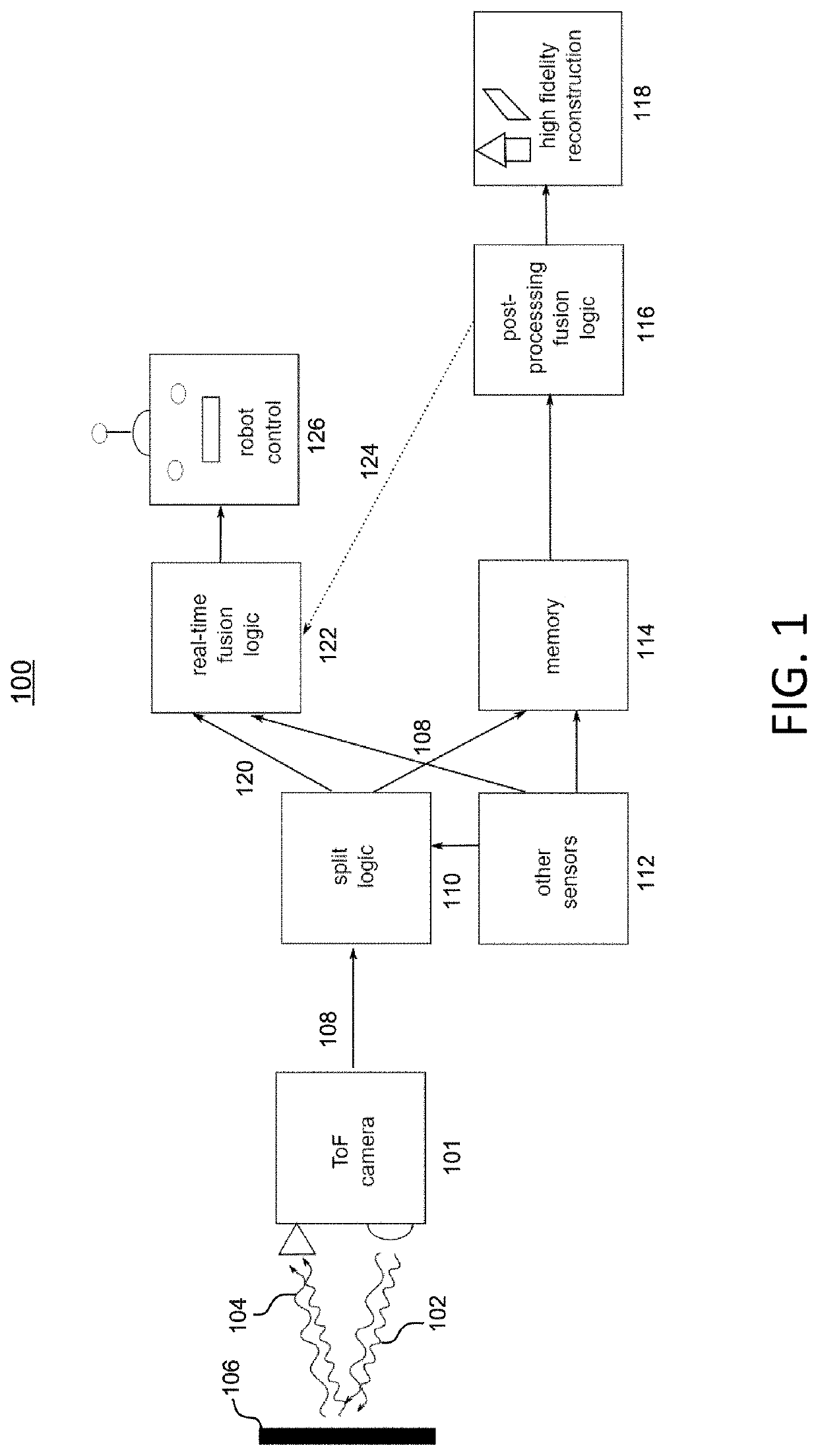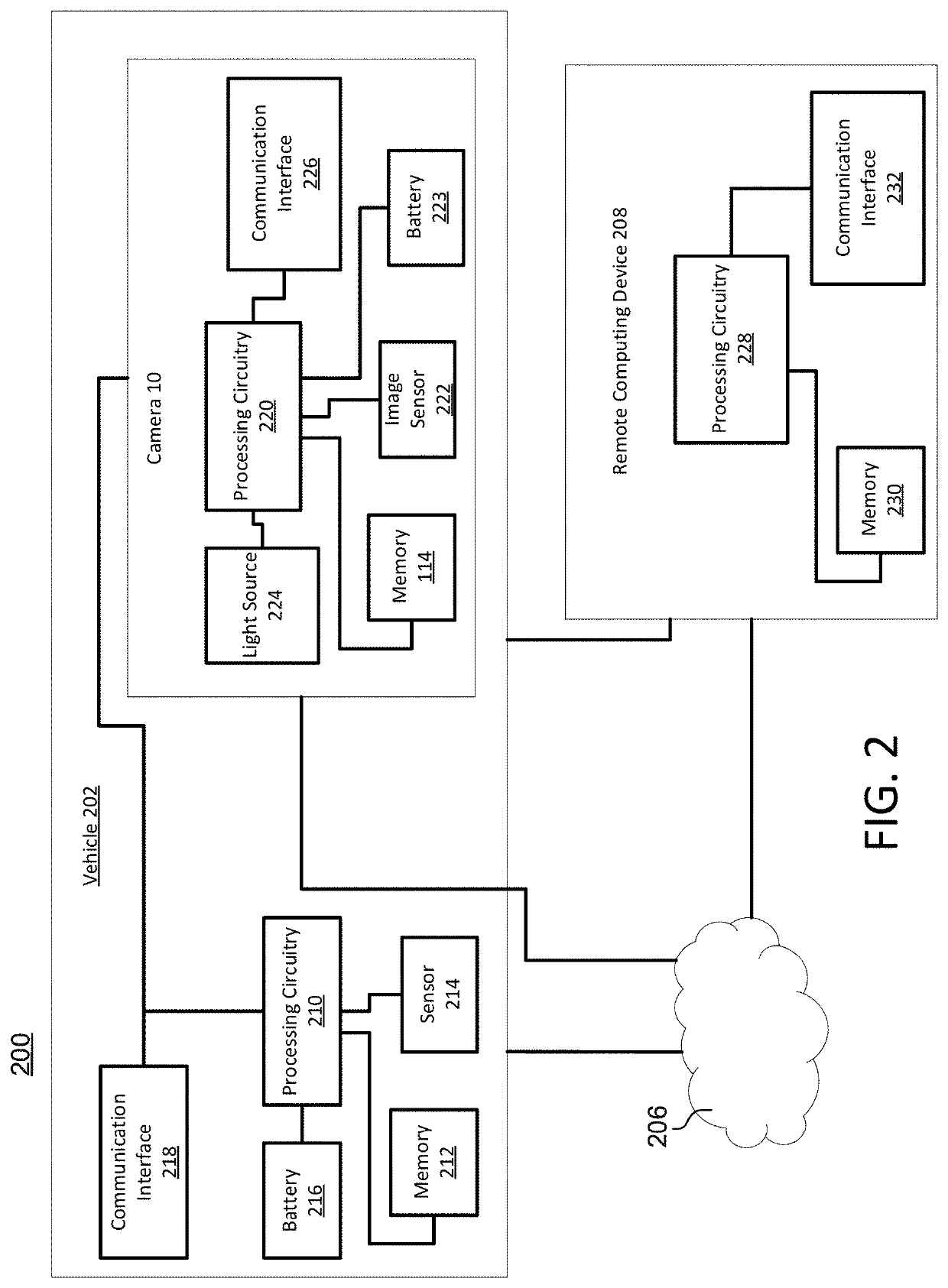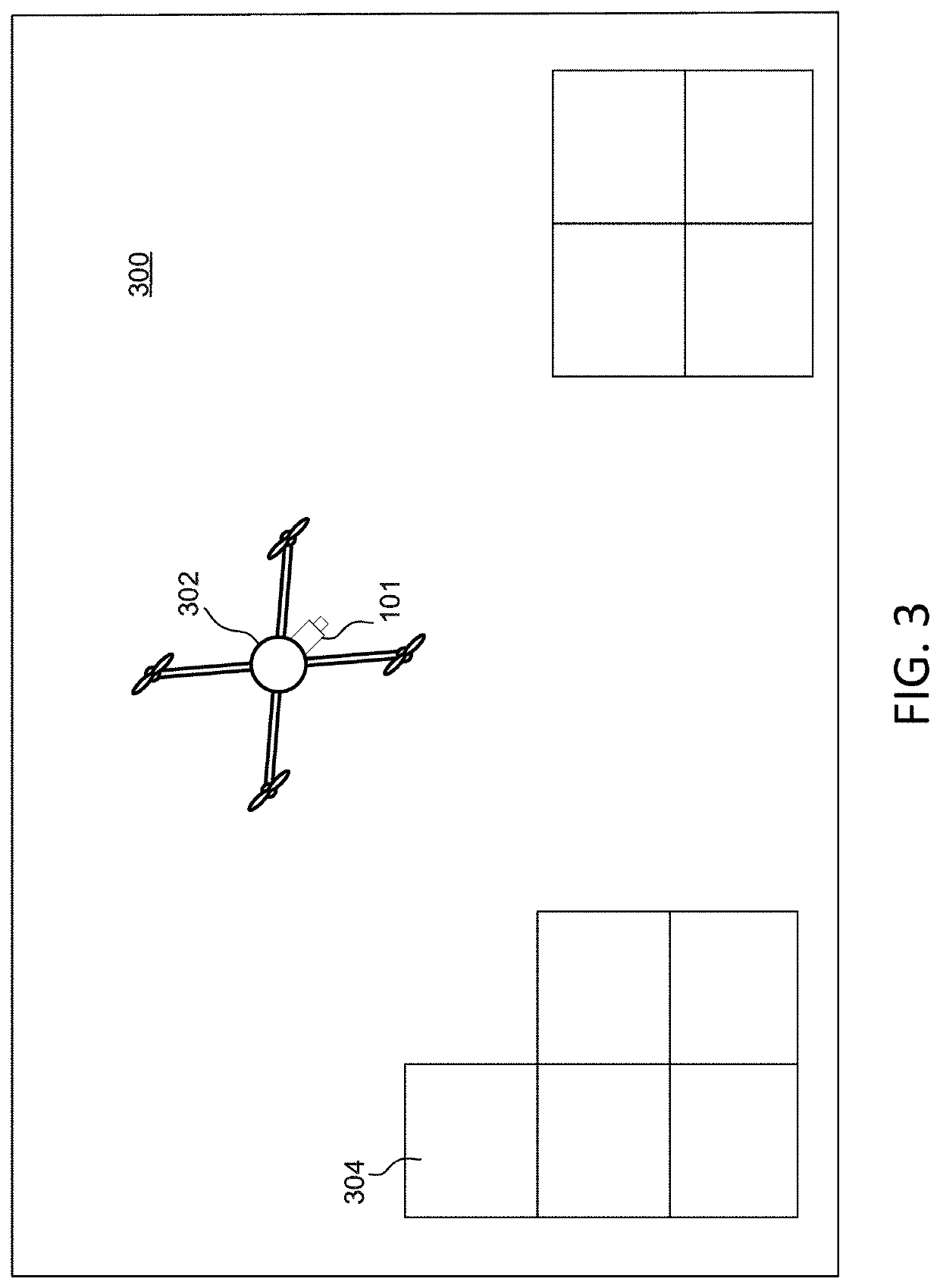Systems and methods for processing time of flight sensor data
a technology of flight sensor and processing time, applied in the field of selectively processing time of flight sensor data, can solve the problems of short unambiguous range, difficult to properly react to such a new object without making bold assumptions, and reduced unambiguous range, so as to achieve the effect of reducing or eliminating the limitations of the current system for processing tof sensor data
- Summary
- Abstract
- Description
- Claims
- Application Information
AI Technical Summary
Benefits of technology
Problems solved by technology
Method used
Image
Examples
Embodiment Construction
[0026]FIG. 1 is a block diagram of an illustrative system for processing time of flight (ToF) data generated by ToF camera 10, in accordance with some embodiments of the present disclosure. System 100 comprises ToF camera 101 configured to emit light 102 to portions of an environment surrounding ToF camera 101, e.g., towards object 106 in the environment, and detect light 104 reflected by portions of the environment, e.g., object 106. In some embodiments, light 102 and 26 may be reflected infrared (IR) light, near IR light, visible light, or any combination thereof. ToF camera 101 may determine depth data (as well as amplitude or intensity data) of one or more points of a scene or environment surrounding ToF camera 101 based on emitted light 102 and reflected light 104. ToF camera 101 may simultaneously output, with the depth data, amplitude or intensity information (e.g., a 2D intensity image or video of the environment) based on an amount of the light 104 returning to ToF camera 1...
PUM
 Login to View More
Login to View More Abstract
Description
Claims
Application Information
 Login to View More
Login to View More - R&D
- Intellectual Property
- Life Sciences
- Materials
- Tech Scout
- Unparalleled Data Quality
- Higher Quality Content
- 60% Fewer Hallucinations
Browse by: Latest US Patents, China's latest patents, Technical Efficacy Thesaurus, Application Domain, Technology Topic, Popular Technical Reports.
© 2025 PatSnap. All rights reserved.Legal|Privacy policy|Modern Slavery Act Transparency Statement|Sitemap|About US| Contact US: help@patsnap.com



